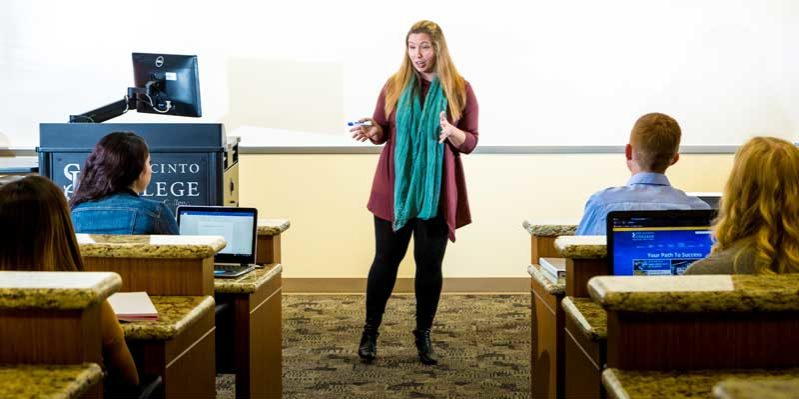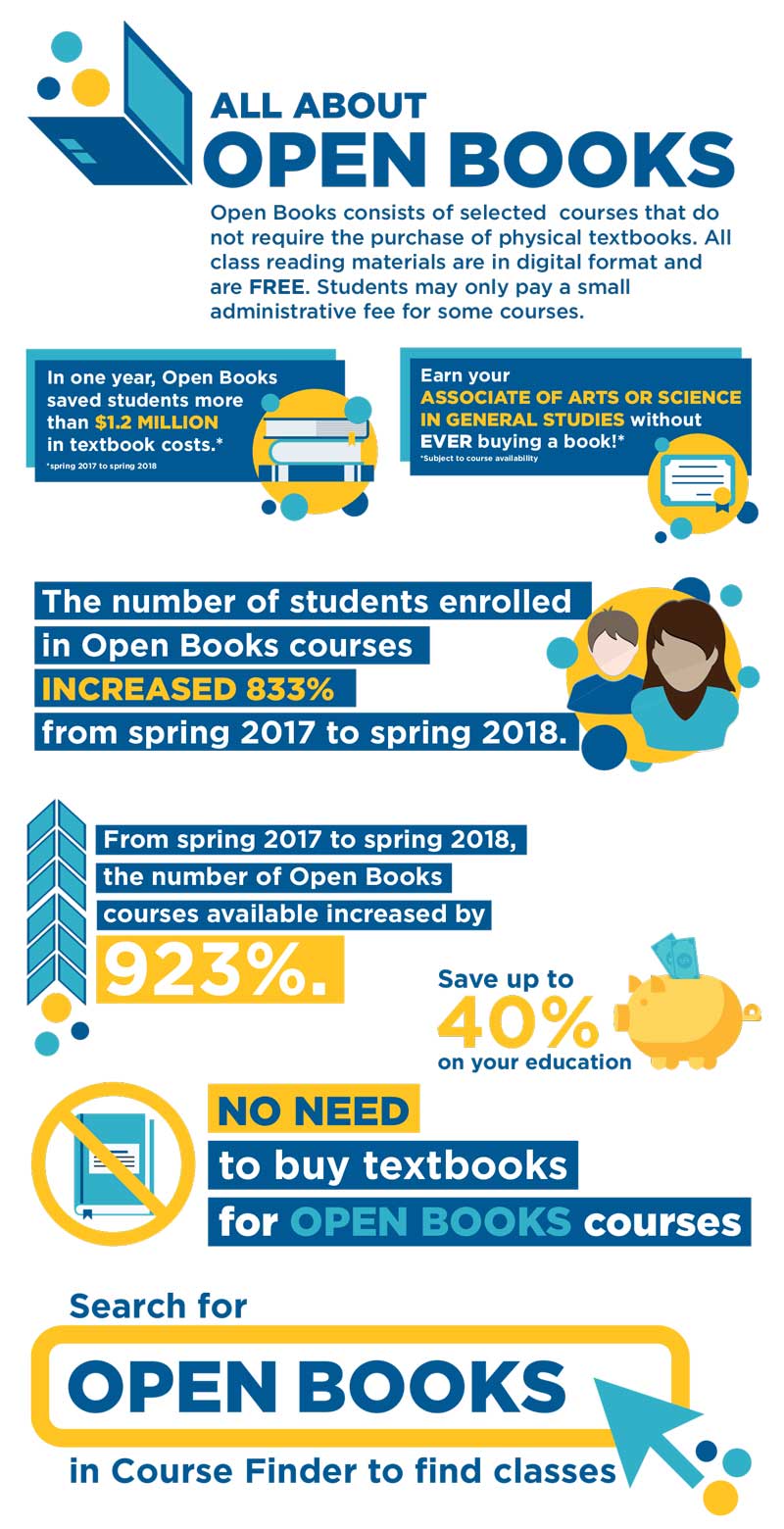
Open educational resources (OER) are creating an impact on higher education more than ever before. OERs are free, open-licensed, peer-reviewed digital classroom materials and textbooks that faculty can use and adapt to fit their course’s student learning outcomes. The ongoing rise of textbook costs is a constant barrier to student success and a key factor in low retention rates. Colleges and universities nationwide are increasing their OER course options to help eliminate these textbook cost barriers thus increasing retention and enrollment.

In spring 2017 San Jacinto College piloted 30 sections of OER courses, branded as “Open Books” courses, with 768 students enrolled. To date, there are now 307 course sections (a 923 percent increase) and 7,166 students enrolled in Open Books courses (an 833 percent increase) for the spring 2018 semester. Why have the numbers increased so quickly? Students and faculty are honing in on the cost savings. Since spring 2017, San Jacinto College has saved students more than $1.2 million dollars.
“I saved so much more money enrolling in an Open Books course compared to a traditional course that uses a physical textbook,” said San Jacinto College accounting student Gloria Elsner. “Open Books makes it a lot easier than carrying around a heavy backpack. Anywhere that you have access to Wi-Fi you can access your digital textbook. The digital format is more user friendly, and it’s easier to study with and ask classmates questions since sometimes with textbooks someone may have a different version that the one you have. I really hope San Jacinto College continues to have more Open Books classes available.”
One of the biggest draws for faculty aside from offering students low cost digital course materials is the flexibility OER offers for student learning outcomes. Faculty are now able to use the most current up-to-date materials with some being updated each semester. OER faculty communities also allow faculty to share best practices for adopting and adapting OER materials.
“As a faculty member, Open Books has allowed me to use the continuous academic freedom that our College has always promoted,” said Tonja Conerly, San Jacinto College sociology professor and Open Books project director. “I am working with an endless number of peers literally throughout the world, sharing knowledge and different teaching techniques. Open Books really allows our faculty to enhance their pedagogy because they can tailor these unique resources to their courses. At the end of the day, we’re providing our students with the same quality, peer-reviewed educational resources, but at no or minimal cost.”
OER is steadily rising to the forefront of the national higher education stage. In 2012, California legislators voted to create 50 free OER digital textbooks for state university students. 2017 saw at least 70 OER-related bills introduced in more than half of the country’s state legislators, including Texas, Colorado, Maryland, Washington and New York. In addition to the earlier passage of the Excelsior Scholarship program which allows free college tuition for qualifying New York students, its state leaders also appropriated $8 million to aid in the development and use of OER.
As more state legislators and faculty members throughout the U.S. join the OER movement, educational access will become more attainable for college students. San Jacinto College estimates that by 2020 its students will save more than $3.5 million.
For more information on OER at San Jacinto College, visit sanjac.edu/open-books.
